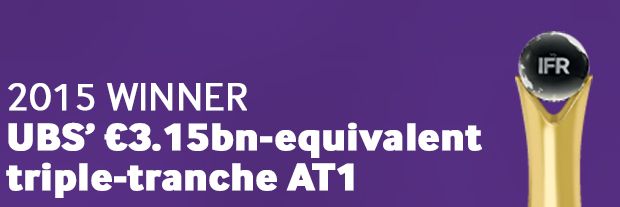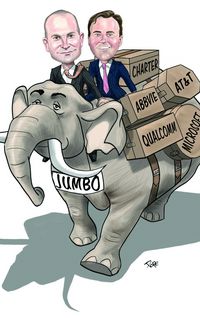Breaking new ground
UBS executed a multi-tranche, multi-currency Additional Tier 1 trade that brought innovation to a maturing market and represented a key milestone for a bank that once came close to collapse.
The pressure was on not only to raise some €3.15bn-equivalent in the bank’s first trip to this market, but to ensure those bonds performed.
UBS became the first bank to build a greenshoe option into an AT1 structure, a technique borrowed from equity syndication to assuage investor fears around the volatility that had frequently beset past deals.
UBS went on to exercise nearly the full greenshoe option of 10% on the two US dollar tranches. All three tranches traded up by as much as 2.45 points a few days after pricing.
The idea left the head of a rival debt syndicate kicking himself that they had not thought of it first. HSBC went on to use the tool in its own AT1 deal the next month.
It was also the first time that a bank had sold low-trigger bonds alongside high-trigger ones. The US$1.15bn perpetual non-call five bonds will be written off should UBS’ Common Equity Tier 1 ratio fall below 7%, the first high-trigger, full permanent writedown bonds to be sold. The other bonds have a 5.125% trigger.
And they were the first bonds to be sold out of UBS’ newly created holding company rather than the higher rated operating bank.
“The significance for our broader capital plan should not be underestimated,” said Barry Donlon, UBS’ head of capital solutions.
Timing was key. UBS announced the deal the same day as its full-year results, which helped drive home its capital adequacy. It swiftly moved to a two-day European roadshow run via three separate teams.
The first quarter might have offered some of the year’s best execution windows but it also left UBS fighting for investors’ attention, with three AT1 deals having already priced that week alone. Concerns around the surging Swiss franc and negative interest rates were rife.
But UBS was well prepared. It had designed the tranches with input from core investors and secured cornerstone bids that ensured momentum from the offset.
Orders surged to more than US$15bn-equivalent, with interest from Asia helping to expand UBS’ traditional investor base – and enabled the bank to push on price.
Guidance on the US$1.15bn perpetual non-call five high-trigger deal moved from 7.25% area to 7.125% and for the US$1.15bn low-trigger perpetual non-call 10-year from 7.125% area to 7%. The €1bn perpetual non-call seven was priced at 5.75%, tighter than guidance of 5.875%–6%.
To see the digital version of the IFR Review of the Year, please click here .
To purchase printed copies or a PDF of this report, please email gloria.balbastro@tr.com .



